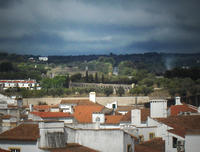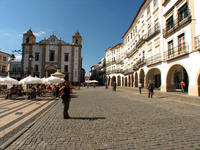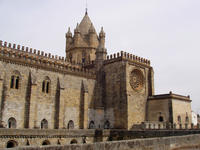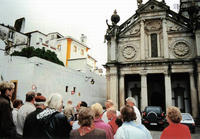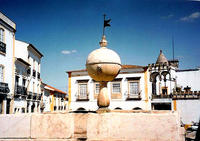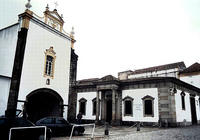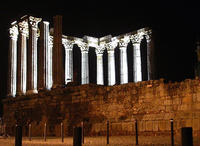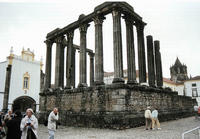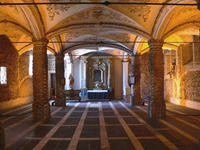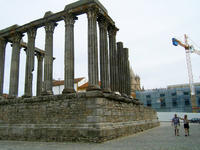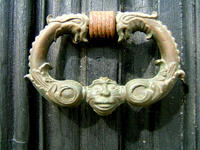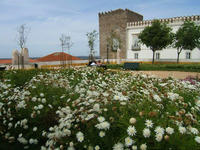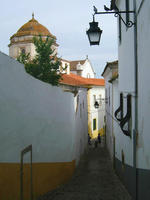You are in: Europe -> Portugal -> Historic Centre of Évora, and traditional search or Image Gallery will yield results of this site only
Historic Centre of Évora
| Site number: | 361 |
|
| Type of site: | Cultural | |
| Date: | 15th century | |
| Date of Inscription: | 1986 | |
| Location: | Europe, Portugal, Province: Alentejo, District: Evora | |
Up to 75 images are shown here. Click on each for more details or on Image Gallery for more images.
| Description: | With roots dating back to Roman times, this museum-city reached its golden age in the 15th century, when the Portuguese kings settled there. Its unique quality comes from its azulejo decorated, whitewashed houses and wrought-iron balconies from the 16th-18th century. Brazil’s Portuguese architecture was profoundly influenced by the site’s monuments. --WHMNet paraphrase from the description at WHC Site, where additional information is available. | |
| Évora is a city and a municipality in Portugal. The city proper has 41,159 inhabitants, and the municipality has a total area of 1,307.0 km² with a population of 55,619 inhabitants. It is the seat of the district of Évora and capital of the Alentejo region. The municipality is composed of 19 parishes, and is located in the District of Évora. Évora was ranked first in a study concerning competitiveness of the 18 Portuguese district capitals - according to a study made by Minho University economic researchers and published in Público newspaper on 30th September 2006. The present Mayor is José Ernesto Oliveira elected by the Socialist Party. The municipal holiday is June 29. Évora is ranked number 3 in the Portuguese most livable cities survey of living conditions published yearly by Expresso. Évora is situated in Alentejo (southern Portugal). It is the chief city of the district. The seat of the municipality is the city of Évora, composed by the parishes of Santo Antão, São Mamede and Sé e São Pedro in the historical centre and the urban parishes of Bacelo, Horta das Figueiras, Malagueira and Senhora da Saúde outside the ancient city walls where most of the population in fact reside. The remaining parishes in the municipality are rural or suburban and do not form part of the city for statistic purposes. Évora has a history dating back more than two millennia. It was known as Ebora by the Lusitanians, who made the town their regional capital. The Romans conquered the town in 57 B.C. and expanded it into a walled town. Vestiges from this period (city walls and ruins of Roman baths) still remain. Julius Caesar called it Liberalitas Julia (Julian generosity). The city grew in importance because it lay at the junction of several important routes. During his travels through Gaul and Lusitania, Pliny the Elder also visited this town and mentioned it in his book Naturalis Historia as Ebora Cerealis, because of its many surrounding wheatfields. In those days Évora became a flourishing city. Its high rank among municipalities in Roman Spain is clearly shown by many inscriptions and coins. The monumental Corinthian temple in the centre of the town dates from the 1st century and was probably erected in honour of emperor Augustus. In the fourth century, the town had already a bishop, named Quintianus. --Wikipedia. Text is available under the Creative Commons Attribution-ShareAlike License. | ||
| Source: | http://whc.unesco.org/en/list/361 | |
| Reference: | 1. UNESCO World Heritage Center, Site Page. | |



